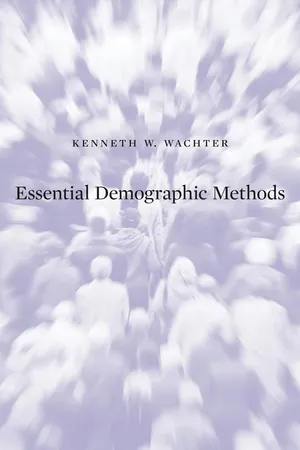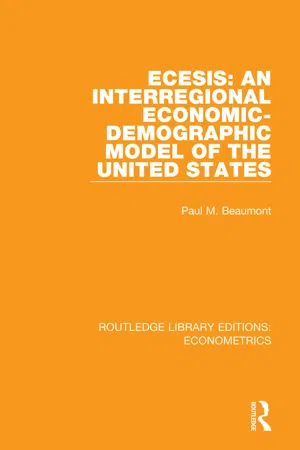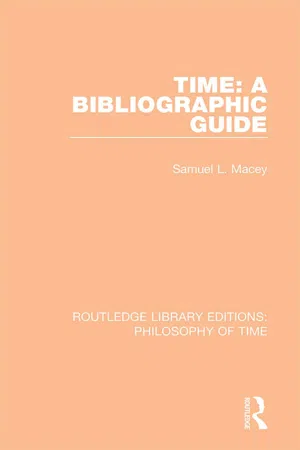Fertility, Mortality and Migration
Fertility, mortality, and migration are key demographic processes that shape the population dynamics of a region. Fertility refers to the birth rate, mortality to the death rate, and migration to the movement of people into and out of an area. These processes have significant impacts on population size, age structure, and overall population distribution.
7 Key excerpts on "Fertility, Mortality and Migration"
- eBook - ePub
An Introduction to Population Geographies
Lives Across Space
- Holly R. Barcus, Keith Halfacree(Authors)
- 2017(Publication Date)
- Routledge(Publisher)
...There is a clear prima facie case for the discipline of Demography : “the scientific study of the size, composition, and distribution of human populations and their changes resulting from fertility, mortality, and migration” (Poston and Bouvier 2010: 3). Births, deaths and human migrations between locations across the globe certainly require measurement, presentation and discussion, and future trends predicted. But whilst Demography also involves itself with the causes of the patterns, trends and magnitudes it identifies—“the factors that affect these components” (Poston and Bouvier 2010: 3)—a more dedicated emphasis on their contextualized spatial expression has become the focus of Population Geography. 1.2.2 … across real places Population Geography can be defined initially as the study of “the geographical organization of population and how and why this matters to society” (Bailey 2005: 1). An immediate illustration of how such a spatial lens is both significant and important comes, once again, via some simple demographic facts about the state of the world today (developed more fully in Chapter 3). Consider infant mortality rates (10.3.1) in a small selection of countries in Asia and Europe, shown in Table 1.1. First, even across these ten countries there is a considerable range of values. This is true even within the same continent, such as the contrast between Romania and Norway in Europe. Second, although there is a general trend towards declining infant mortality, countries such as Mongolia and India retain extremely high rates. Furthermore, many countries affected by civil strife, such as Afghanistan, Congo or Iraq, are understandably unable to provide data. Thus, Table 1.1 is biased in favor of countries experiencing relative political stability...
- eBook - ePub
Demographics
A Guide to Methods and Data Sources for Media, Business, and Government
- Steven H. Murdock, Chris Kelley, Jeffrey L. Jordan, Beverly Pecotte, Alvin Luedke(Authors)
- 2015(Publication Date)
- Routledge(Publisher)
...It refers to the aggregate, the group of people as a whole, in an area. As such, it has characteristics that are unique to an aggregate and are not just the sum of individuals’ traits or characteristics. For example, a population can have a death rate, birth rate, etc., but individuals are either alive or dead, have or have not been born. There is no death or birth “rate” for an individual. Demographers tend to concentrate on the description of factors about the population as a whole, as an aggregate. Size refers simply to the number of people in the population in a given area, distribution to how the people in a population are distributed across space (with space usually being defined as a specific type of area such as a metropolitan area, city, census tract, etc.), and composition to the characteristics of the population (e.g., age, sex, race/ethnicity). Fertility refers to the reproductive behavior (specifically the number of births) in a population, mortality to the incidence of death in a population, and migration to the movement of people from one area to another. Unlike fertility and mortality that are clearly identifiable from a biological event, a migration event is less directly observable. Migration is not simply movement but relatively permanent movement from one area to another. Thus commuting is not considered migration. The exact definition of migration varies among nations. In the United States, migrants are those who have changed their residence from one county to another. There is no minimum distance required to be a migrant. Migration is often further differentiated relative to its source and its relationship to an area of reference. Thus migration includes both domestic migration, which is the movement of people into or out of an area from or to another area in the same nation, and international migration, which is the movement of people from or to other nations (also referred to by the general term of immigration)...
- eBook - ePub
Population Geography
A Systematic Exposition
- Mohammad Izhar Hassan(Author)
- 2020(Publication Date)
- Routledge India(Publisher)
...These movements do not involve any permanent or semi-permanent change in the place of residence to qualify as migration. The study of migration occupies an important place in population studies, as together with fertility and mortality, migration determines the size, distribution and growth of population along with its composition and characteristics. As compared with the other two components, migration has been a more popular subject of interest for population geographers. Interestingly, demographers have paid very little attention to this component of population change. Population geographers have since long been concerned with the relationships between movement of people, distance and interacting areas (Woods, 1979:165). Along with its various demographic, social and economic effects, population geographers have also been concerned with the environmental influences upon migration streams and consequences in areas of departure and destination (Clarke, 1972:130). Mobility and migration: general terms and concepts As noted previously, migration refers to permanent or semi-permanent change in the place of residence of an individual or a group of individuals from one location to another. Hence, it is different from the more general term mobility, which refers to all types of movements of people (Rubenstein and Bacon, 1990:75). Thus, the term mobility includes both permanent (and semi-permanent) and temporary movements of people over the earth. With regard to temporary movements, the examples of which have already been cited, a distinction is generally made between a cyclic and a periodic movement. A cyclic movement includes short duration trips to place of work (i.e. commuting), or frequent business trips of people in business, or movement of nomads, which is comparatively irregular in timing. A periodic movement, on the other hand, involves a longer period of residence away from home base than that in the cyclic movement (Blij and Muller, 1986:103)...
- eBook - ePub
- Kenneth W. Wachter(Author)
- 2014(Publication Date)
- Harvard University Press(Publisher)
...11 Migration and Location 11.1 Spatial Demography People are found in places and move from place to place. All the processes we have been studying occur within space as well as across age and time. In this chapter we turn to methods of spatial demography. We leave behind the fiction of closed populations. In open populations, people enter and exit not just by being born and dying but also by crossing borders or changing categories of legal status. Migration across borders is a major component of population growth in many countries, especially the United States, influencing population composition, politics, economics, and social harmony. Great migrations are part of the drama of history, like the Exodus in the Bible, the trans-Atlantic flows of people to the Americas after 1500, refugees from Hitler, World War II, and other wars and famines, guest-worker entrants to the European Union or to the Gulf states. Movements within countries among regions, among places of different kinds, and especially from rural to urban areas likewise shape history and our own experience. Both movements between nations and movements within nations are treated in Section 11.2. In this era of globalization, however, the “space” that each of us inhabits is virtual as well as physical. We are positioned in networks, in social hierarchies, in structures of identity. Demographers, in partnership with geographers, have developed techniques to study such broader kinds of “locations”. Section 11.3, by way of example, extends measures for the concentration of residents in cities to measures of concentration of wealth, information, and network connectivity. Today, people can move from place to place by leaps and bounds, by airplane, ship, car, bus, or train. Prehistoric people moved by foot, step by step, here and there. Techniques for understanding haphazard movement, step by step, so-called “random walks”, turn out to have applications throughout migration studies, public health, and forecasting...
- Paul M. Beaumont(Author)
- 2018(Publication Date)
- Routledge(Publisher)
...Chapter Nine: Fertility, Mortality and Migration 9.1 Introduction The previous chapter outlined the accounting framework used in the ECESIS demographic model. The accounting system takes as given state level fertility and mortality rates and state-to-state migration flows. This chapter describes how each of these variables is determined in ECESIS. To avoid confusion, in this section the term “fertility rate” will refer to births per thousand females in the age group 18-44 years. This rate is not disaggregated by race. A “crude birth rate” further aggregates by sex. The “mortality rate” refers to deaths per age-sex cohort. Again, there is no race disaggregation. 9.2 Fertility Rates Economists have begun to analyze fertility using the same framework that they have traditionally used to analyze goods. The “price” of bearing and raising children consists of direct costs such as food, clothing, health care, etc., and indirect costs such as the opportunity cost of (typically) the mother’s time. Several studies have found the expected negative relationship between female wages and the fertility rate (Cain and Dooley 1976; Cain and Weininger 1973; DeFronzo 1976; DeTray 1973; Butz and Ward 1979). Continuing the analogy, the income effect on the fertility rate should be positive as suggested by Maithus. In fact, there tends to be a negative relationship between income and fertility. The simple correlation, however, fails to account for the influence of other variables. Becker and Lewis (1973), Easterlin (1976), and Leibenstein (1975, 1976) have presented arguments showing that the income effect on fertility may be offset by the effect of income on other variables which also affect fertility. Two theories currently dominate research on the economic effects on fertility. The first, proposed by Easterlin (1973), focuses on relative cohort size and the resulting relative income measures...
- eBook - ePub
Migration Theory
Talking across Disciplines
- Caroline B. Brettell, James F. Hollifield, Caroline B. Brettell, James F. Hollifield(Authors)
- 2022(Publication Date)
- Routledge(Publisher)
...6 Geographical Theories of Migration Exploring Scalar, Spatial, and Placeful Dimensions of Human Mobility Marie Price DOI: 10.4324/9781003121015-7 Geography is a discipline closely associated with maps and spatial reasoning. Maps, especially thematic ones, challenge us to visualize spatial distribution of phenomena across space and over time at various scales. Anything that is unevenly distributed is eminently mappable and thinking in maps invites us to consider spatial arrangements. The varied movement of people has been an irresistible subject for geographical inquiry and theorization since the inception of the modern discipline. Why is a cluster of migrants located in one place and not another? How are clusters linked through networks and how do these distributions influence space and place? What structural or environmental forces are driving human mobility? Mapping forces one to select a scale of analysis; consequently, geographers have a proclivity to shift scales, from the local to the global, and even jump scale when necessary. Not limited to any single container of convenience, such as the territorial state, geographers consider various socio-legal containers when theorizing about migration from neighborhoods, to cities, to meta-regions such as Europe or Africa. Geographic scholarship is increasingly interested in how these containers are enforced, deformed, and reconstituted in response to migration. Finally, geography is concerned with a deeper understanding of context and placemaking, seeing space as layered with information such as: the physical environment, the ethnic composition of residents, and their socioeconomic well-being. Human mobility is often a response to and a catalyst for these layers, and thus the social and environmental contexts of areas of departure and reception invite geographical theorization. This chapter will consider some of the foundational theories that shape geographical understandings of migration and human mobility...
- eBook - ePub
- Samuel L. Macey(Author)
- 2018(Publication Date)
- Routledge(Publisher)
...London: Cass, 1926. Grigg, D. Population Growth and Agrarian Change. Cambridge: Cambridge UP, 1980. Heer, D. “What Is the Annual Net Flow of Undocumented Mexican Immigrants to the United States?” Demography 16 (1979): 417-23. Hornby, W. F., and M. Jones. An Introduction to Population Geography. Cambridge: Cambridge UP, 1980. Howe, G. M. National Atlas of Disease Mortality in the United Kingdom. London: Nelson, 1970. ——, ed. A World Geography of Human Diseases. London: Academic P, 1977. Hudson, T. “Health Migration in America’s Nineteenth Century Westward Movement.” Ecumene 13 (1981): 50-58. Johnston, R. J. Geography and Geographers: Anglo-American Human Geography since 1945. London: Arnold, 1979. Jones, E. F. “Fertility Decline in Australia and New Zealand 1861-1936.” Population Index 37 (1971): 301-38. Jones, Huw R. Population Geography. 2nd ed. London: Paul Chapman. 1990. Bibliography 286-317. Jones, R. C. “Undocumented Migration from Mexico: Some Geographical Questions.” Annals, Association of American Geographers 72 (1982): 77-87. Kahn, H., et al. The Next 200 Years: A Scenario for America and the World. New York: Morrow, 1976. Kellerman, Aharon. Time, Space, and Society: Geographical Societal Perspectives. Dordrecht: Kluwer, 1989. Knights, P. The Plain People of Boston 1830-60. New York: Oxford UP, 1971. Knodel, J. “Law, Marriage and Illegitimacy in Nineteenth-Century Germany.” Population Studies 20 (1966-67): 279-94. Kosinski, L., and R. M. Prothero, eds. People on the Move: Studies on Internal Migration. London: Methuen, 1975. Krause, J. “Changes in English Fertility and Mortality 1781-1850.” Economic History Review 11 (1958): 52-70. Larson, A. Patterns of Contraceptive Use Around the World. Washington: Population Reference Bureau, 1981. Lee, R. D., ed. Population Patterns in the Past. New York: Academic P, 1977. Lenski, G. The Religious Factor: A Sociological Study of Religion’s Impact on Politics, Economics and Family Life...






